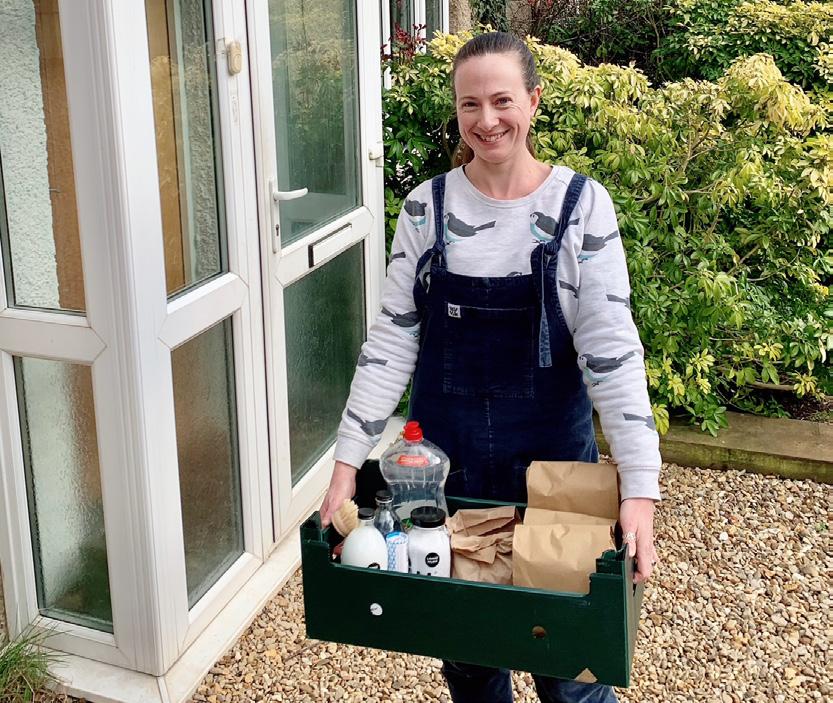FEATURE
Easter in Eastgate It was a quintessential English country cottage, at the top of Eastgate with the river flowing by at the bottom of the garden. This was large with trees laden with blossom in spring and fruit in late summer and bushes full of jewel-like berries. Built in 1769, the house was L shaped, the walls were mud and stud with a cement render and when you entered from the pavement you were in the hall with a good-sized parlour on the right. At the back was a smaller-sized comfortable sitting room with a bow window looking out onto the garden. Beyond this was a kitchen and walk-in pantry. There were two sheds, one for coal and wood and the other for general storage. And the outside privy or loo. Upstairs there were three bedrooms. The house had been built by an old Deeping family, the Chesterfields (who featured in issue 6 of this magazine) who were farmers and craftsmen in a wide spectrum of trades ranging from furniture makers to grocers, to drapers. In 1874 the widow of Francis Chesterfield, Jane Ann, sold her deceased husband’s farm in Frognall and with the proceeds opened a draper’s shop in the family home. Jane had served an apprenticeship to a milliner and dressmaker and had, until her marriage, run a business from her parents’, James and Ann Frisby’s, home in Eastgate where they had a farm of 30 acres. She had married Francis in a ceremony at the Priory Church in 1866 and the couple had two children George (b.1870) and Samuel (b.1873). The business thrived and Jane employed both of her sons in the shop. Samuel left briefly to undertake Post Office training and returned as a Rural Postman, but eventually he set up his own butcher’s shop in Eastgate. After their mother’s death in 1912, George took over the shop until after the First World War when he had to give up for health reasons. About this time the brothers, now infirm, found themselves in court after young Harold Howes, also of Deeping St James, had stolen three shillings on 31 May 1921 while picking gooseberries for which he had been paid three
Kate Moulds (centre) pence. Harold’s father had birched him but the boy was unrepentant and so his father referred him to the authorities. The Bench told Harold that if he came before the court again he would be sent to an industrial school. His father had to pay 25 shillings court costs, Harold was told to return the money he had stolen and was bound over to be on good behaviour of six months in the sum of £2. Samuel died in 1925 and his brother George three years later, bringing to an end the Chesterfields’ era at the shop at the top of Eastgate. The enterprise was then taken over by Londoners Charles and Alice Lincoln who lived further down Eastgate in Roma Cottage. Charles’ nickname was Romeo. He had been an auctioneer and retired to the country but as an active man saw an opportunity in Chesterfields’ shop and took it over, building an extension with a red pantile roof and turning the business into a grocery and confectioners. The shop thrived as schoolchildren would spend their pocket money on the way to school, a halfpenny in those days affording a generous selection of sweets. Workmen would call in for tobacco on their way home from work. Charles and Alice died in the mid 1920s and were succeeded by George and Rebecca Knowles. George was keen to move to Deeping St James to follow continued >
15











